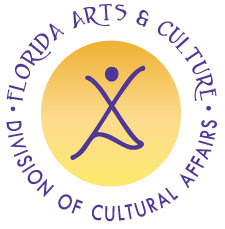Sunday, May 4, 2014
Success for Auction Houses in China’s Fine Arts Market - posted by FFAB
Broad Strokes of Success for Auction Houses in China’s Fine Arts Market
Posted on April 30, 2014 by China Briefing
SHANGHAI – London-based auction house Christie’s held its second-ever art sale in Shanghai last week, netting US$20 million in sales of fine art, including a Warhol, Picasso and Chinese artist Zao among the three highest-priced sales. While still modest by international standards, the auction’s 63-27 ratio of Chinese-to-foreign successful bidders illustrates that a mature taste for the fine arts is well cemented among China’s nouveau-riche.
As an intangible, non-functional commodity, fine art has long held important cultural capital, in China as elsewhere. After a nearly decade-long boom, in which China’s fine arts market grew 35-fold to US$14 billion in 2011, and a major dip in 2012, the market resurged in 2013, with total sales of nearly US$16 billion, making it the world’s second largest by value.
As a sign of the times, the IPO of China’s largest auction house, state-owned Poly Culture Group, in February of this year went for US$331 million. A subsidiary of the group, Polyculture, is the world’s third-largest auction house by revenue and holds the largest share of the China market by value (with RMB 7.9 billion in sales in 2013).
Long active in Hong Kong, foreign firms Sotheby’s and Christie’s have been competing for shares in the Chinese mainland auction market since being granted approval in 2012 and 2013 respectively, and are set to ramp up their China activities this year.
Sotheby’s made the earlier entrance into China through a joint venture with state-owned Beijing GeHua Art Co., under which it is licensed to conduct sales in the Beijing Freeport and other special zones. The firm made headlines last month when it sold a small Ming-Dynasty era bowl in Hong Kong for a record US$36.3 million to a Shanghai collector.
Christie’s inaugural auction in mainland China, held in Shanghai last year, brought in total sales of US$24 million, including the first-ever Picasso sold on a mainland auction. In April, the company expanded to Beijing by opening an art space at the Imperial Club to be used as a multi-purpose platform for exhibitions, lectures, special programs and private shows.
By basing their operations in Shanghai, Christie’s and its buyers are able to take advantage of preferential tax policies in the city’s Free Trade Zone. For example, the auction house is able to import works of art into the Zone at no cost of customs duty – and as long as the art is kept within the boundaries of the Zone, the buyer is not required to pay an imports tax on it.
Both auction houses, however, remain barred from selling “cultural relics” dating from pre-revolutionary China – an extremely lucrative market outside the country, valued at US$14.3 billion in 2012.
RELATED: Chris Devonshire-Ellis on Art and Culture in Understanding China Business
There is a darker side to the upsurge of interest in fine art, however, including market rigging, money laundering and forgery.
It has become commonplace for Chinese buyers to win auctions by placing exorbitant bids and then, when it comes time to pay the bill, questioning the authenticity of the piece as a means to annul the transaction. Subsequently, similar pieces held in their own collections will be valued at a higher price as a result of the inflated bids.
The problem is so severe that it has been identified as a major cause of the dip in the Chinese art market in 2012. Industry watchers point out that only 53 percent of Polyculture’s sales in the first 10 months of 2013 were actually settled – compare with an average of 80 percent of sales in Hong Kong.
A second type of misuse, coined in Chinese as “elegant bribery” (雅贿), consists of disguised money transfers in which works of art are first gifted to government officials, then repurchased on auction by the initial owner for much inflated prices. Here, the intangible nature of art prices makes them particularly susceptible to money laundering.
The threat of forgery also hangs heavy over the Chinese auction houses. Not only may buyers dispute the authenticity of their purchases for ulterior motives as above, but forgeries circulate at even the most prestigious auctions, as in two recent cases involving items purchased on Sotheby’s.
While the pedigree of international auction houses like Christie’s and Sotheby’s goes a long way toward vouching the authenticity of auction items, generally Chinese domestic firms do not benefit from the same reputation.
China’s market for fine art is not all Picasso's and dynastic regalia. The “affordable art” market is also rapidly expanding in the wake of the growing purchasing power of the middle class. Illustrating the potential of this market, while roughly 70 percent of art purchased in the West is classified as affordable, in China this accounts for only 30 percent of the market.
The main Chinese player in this industry, Surge Art, allows customers to purchase art from their website at prices ranging up to about US$5,000. The company also showcases the work of emerging artists in art fairs held in major cities across China – which have been known to attract 10,000 visitors each.
This is good news for both the high- and low-end art markets in China, especially in light of analysis pointing to China’s comparative lack of galleries as an impediment to further industry growth. -
See more at: http://www.china-briefing.com/news/2014/04/30/broad-strokes-success-auction-houses-chinas-fine-arts-market.html#sthash.oVxT3jPk.dpuf
Subscribe to:
Post Comments (Atom)










No comments:
Post a Comment